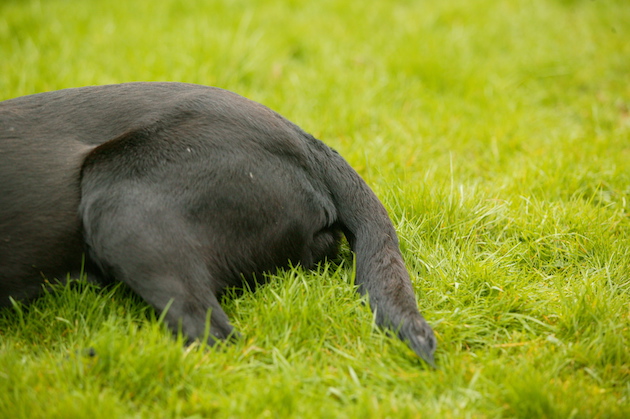Why you should never give dogs ibuprofen
Stiff legs in the morning Q: I notice that our Labrador, as he gets older, is starting to have difficulty…
Win CENS ProFlex DX5 earplugs worth £1,149 – enter here
 Black labradors tailUsd 13 nov 13 nws 4
Black labradors tailUsd 13 nov 13 nws 4
Q: My 19-month-old undocked Hungarian vizsla developed limber tail after attending a working test. The condition came on very quickly and caused him considerable pain. We gave him Metacam and he recovered in about three days. Though he did swim in the working test, it was in relatively warm water. The condition seems poorly understood — could you shed any light on causes, prevention and remedy?
A: Limber tail syndrome (LTS), sometimes referred to as swimmer’s or cold tail, is a curious condition, most frequently reported in working gundogs and particularly Labradors. Typically, the dog presents with a ‘paralysed’ tail; the tail is either held firmly between the legs or part of the tail hangs limp. There is usually some pain or discomfort at the base of the tail, the dog is reluctant to wag it and many will be uncomfortable and distressed.
As part of some recent studies in the UK, LTS was reported in approximately 0.5 to 0.7 per cent of the Labrador retrievers whose owners took part. Furthermore, assuming that swimming may be considered a form of vigorous exercise, the vast majority of cases experienced some form of vigorous exercise prior to developing LTS and about half of those dogs had been both cold and wet. These studies demonstrate that swimming in cold water is not a prerequisite to developing the condition.
The precise cause is unknown, though it is most likely a sign of muscular damage, probably muscular fatigue. This would make sense because the tail is a powerful organ used a lot while working and particularly for swimming.
Stiff legs in the morning Q: I notice that our Labrador, as he gets older, is starting to have difficulty…
I find abbreviations really confusing.
Treatment is rest. Recovery will be spontaneous, albeit over a period of several hours or days. A non-steroidal inflammatory drug such as Metacam will help to reduce inflammation.
Get the latest news delivered direct to your door
Discover the ultimate companion for field sports enthusiasts with Shooting Times & Country Magazine, the UK’s leading weekly publication that has been at the forefront of shooting culture since 1882. Subscribers gain access to expert tips, comprehensive gear reviews, seasonal advice and a vibrant community of like-minded shooters.
Save on shop price when you subscribe with weekly issues featuring in-depth articles on gundog training, exclusive member offers and access to the digital back issue library. A Shooting Times & Country subscription is more than a magazine, don’t just read about the countryside; immerse yourself in its most authoritative and engaging publication.

